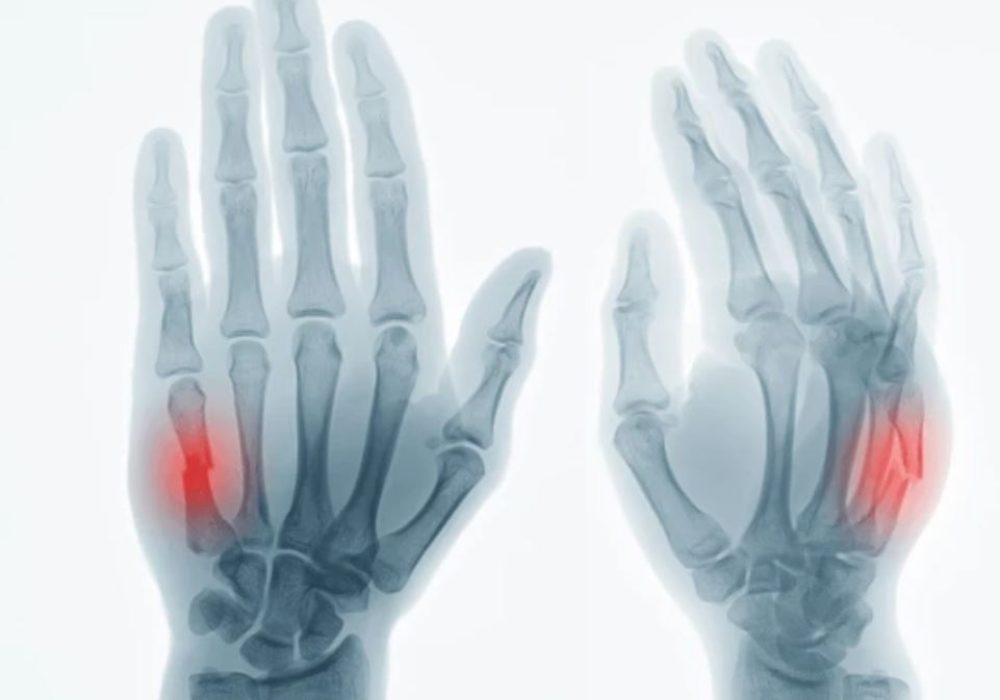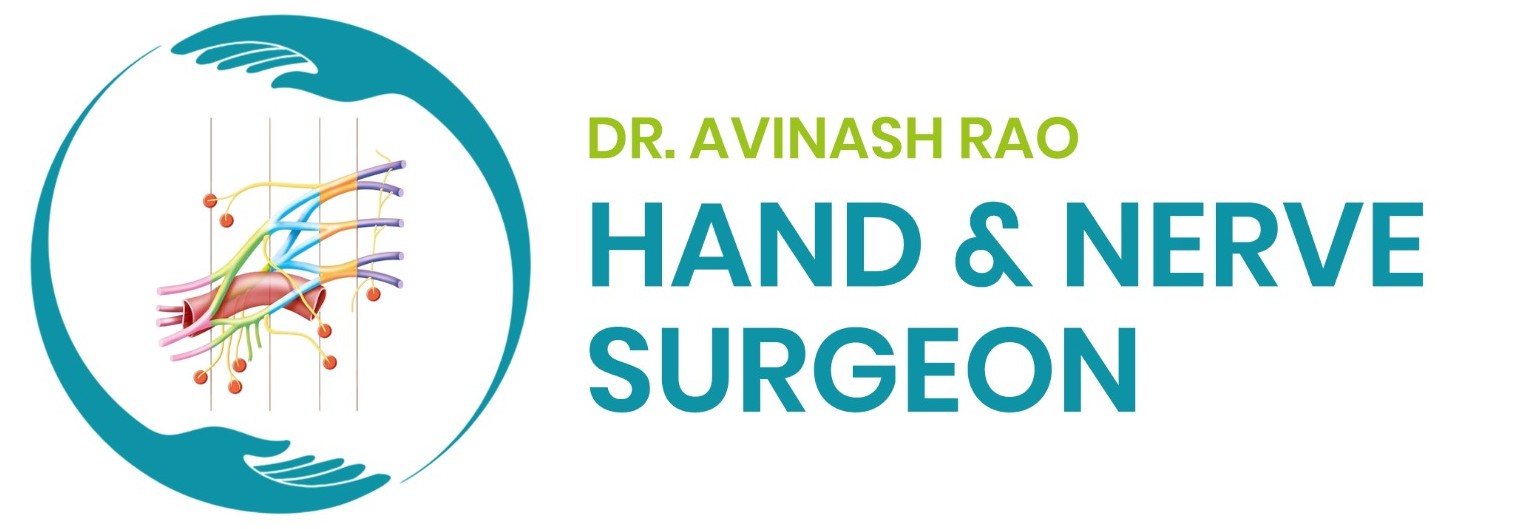
What is a Metacarpal Fracture?
A metacarpal fracture is a type of bone fracture (broken bone). Your metacarpals are the bones in your hand that connect your thumb and finger bones (your phalanges) to your wrist. You can feel your metacarpals by pressing on the back of your hand.
Metacarpal fractures are common injuries. They’re usually caused by falling onto your hand or sports injuries.
You might only need to wear a splint or cast while your bone heals after a metacarpal fracture. Some fractures require surgery to repair.
Metacarpal Bones
Each of your hands has five metacarpal bones that connect your wrist to your thumb and fingers. They’re labeled as your first metacarpal through your fifth metacarpal, starting at your thumb and working toward your pinkie.
- First metacarpal: The bone that connects your wrist to your thumb.
- Second metacarpal: The bone that connects your wrist to your index finger.
- Third metacarpal: The bone that connects your wrist to your middle finger.
- Fourth metacarpal: The bone that connects your wrist to your ring finger.
- Fifth metacarpal: The bone that connects your wrist to your pinkie finger.
How is a Metacarpal Fracture classified?
A healthcare provider will assign your fracture a type or classification depending on which bone was broken, the shape of the fracture or how it happened, and whether it’s open or closed.
Types of Fractures
Some fractures are classified by the shape or pattern of the break line:
- Transverse fracture.
- Oblique fracture.
- Spiral fracture.
- Segmental fracture.
- Comminuted fracture.
- Buckle fracture.
- Hairline fracture.
Some types of fractures are classified by how they happen:
HAND PROBLEMS
- Fractures and Dislocations in Hand
- Metacarpal & Phalangeal fractures
- Ligamentous injuries of fingers & Thumb
- Dislocations of finger joints
- Swellings of Fingers & Hand
- Compartment Syndrome
- Mucous cyst
- Ganglion cyst / Retinacular Cyst
- GCT of Tendon sheath
- Enchondroma (Benign Bone Tumor)
- Squamous cell carcinoma
- Dupuytrens Contracture
- Post Traumatic Contracture
- Post Burn Contractures of fingers
- Volkmann Ischemic Contracture
- Stiff Fingers & CRPS
- Stiff joints of fingers and hand
- Osteoarthritis of Hand
- Finger joint arthritis
- Thumb Basal joint arthritis
- Acute Infections of Hand
- Finger Pulp Infection (Felon)
- Nail Fold Infection (Paronychia)
- Finger Infection (Flexor Tenosynovitis)
- Palm Infection (Deep Spaces of Hand infection)
- Joint Infections in Hand & Wrist (Septic Arthritis)
- Human & Animal bite injuries to hand
- Diabetic Hand Infections
- Bacterial / Fungal / Atypical Hand infections in immunocompromised patients
- Subungual Hematoma
- Nail bed injury
- Nail Deformities
- Glomus tumor
Make Your Appointment
- Compound fracture.
- Stress fracture.
- Avulsion fracture.
Open vs. closed fractures
A healthcare provider will classify your fracture as either open or closed. If you have an open fracture, your bone breaks through your skin. Open fractures usually take longer to heal and have an increased risk of infections and other complications. Closed fractures are still serious, but your bone doesn’t push through your skin.
Displaced metacarpal fractures
“Displaced” or “nondisplaced” are more words your provider will use to describe your fracture. A displaced fracture means the pieces of your bone moved so much that a gap formed around the fracture when your bone broke. Nondisplaced fractures are still broken bones, but the pieces weren’t moved far enough during the break to be out of alignment. Displaced fractures are much more likely to require surgery to repair.
Metacarpal fracture locations and anatomy
Any part of your metacarpal can be fractured. Parts of your metacarpals include the:
- Base: The end of your metacarpal furthest away from your fingers that meets your wrist bones. The end of the base forms a joint where the metacarpal connects to your wrist.
- Shaft: The long middle of your metacarpal.
- Neck: The part that joins the shaft and head.
- Head: The end of your metacarpal that connects to your finger bones. The end of the head forms a joint with your finger bones.
Boxer’s fractures
Fracturing the neck of the metacarpal that connects to your pinkie finger (your fifth metacarpal) is sometimes referred to as a boxer’s fracture. It’s the most common metacarpal fracture, making up 1 in every 4 metacarpal fractures.
Boxer’s fractures are usually caused by punching or hitting something hard with a closed fist (like punching a wall in frustration).
Bennett and Rolando fractures
Bennet and Rolando fractures are fractures that affect the joint at the base of your thumb metacarpal (the first metacarpal). They almost always require surgery.
Who do metacarpal fractures affect?
Anyone can break a metacarpal bone. Some groups of people are more likely to experience a metacarpal fracture than others, including:
- People ages 10 to 40.
- Men.
- Women older than 50.
How common are metacarpal fractures?
Metacarpal fractures are very common. They’re the third most common fracture. One in 10 of all broken bones is a metacarpal fracture.
Broken metacarpals are the most common hand injury for people ages 18 to 34.
How will a metacarpal fracture affect my body?
In addition to pain and other symptoms you might experience, a metacarpal fracture will make it hard — or impossible — to use your hand the way you usually can until it’s healed.
You’ll have to avoid using your hand as much as possible while you’re recovering. Talk to your provider about which motions or activities you’ll have to avoid (and for how long). Putting too much stress on your hand before your metacarpal fracture has healed can reinjure your bones and increase your chances of experiencing complications.
What are the symptoms of a metacarpal fracture?
Symptoms of a metacarpal fracture include:
- Pain.
- Swelling.
- Tenderness.
- Difficulty moving or using your hand.
- Bruising or discoloration.
- A deformity or bump that’s not usually on your body.
If you fracture a metacarpal, there’s also a good chance the other tissue in your hand around your bone is damaged, too. This includes your:
- Ligaments.
- Tendons.
- Muscles.
What are the symptoms of a metacarpal fracture?
The most common causes of metacarpal fractures include:
- Falls.
- Sports injuries.
- Other traumas like car accidents.
- Injuries at work or on job sites.
Other health conditions that affect your hands and fingers can make you more likely to experience a metacarpal fracture. Enchondromas — noncancerous tumors that grow inside your bones — can cause fractures.
How are metacarpal fractures diagnosed?
Your healthcare provider will diagnose a metacarpal fracture with a physical exam and imaging tests.
They’ll probably be able to feel or see a metacarpal fracture in your hand, but you’ll still need imaging tests to confirm which bones are broken and what type of fracture you have.
What tests are done to diagnose metacarpal fractures?
You’ll need at least one of a few imaging tests to take pictures of your fracture, such as:
- X-rays: An X-ray will confirm any fractures and show how damaged your bones are.
- Computed tomography (CT) scan: A CT scan will give your provider or surgeon a more three-dimensional picture of your bones and the surrounding tissue than an X-ray.
- Bone Density Test: A bone density test (sometimes called a DEXA or DXA scan) can help diagnose osteoporosis.
How are metacarpal fractures treated?
How your fracture is treated depends on which type it is, what caused it and how damaged your bones are.
Immobilization
If your fracture is mild and your bones didn’t move far out of place (if it’s nondisplaced), you might only need a splint or cast. Most people who experience a metacarpal fracture need immobilization for three to six weeks. You’ll need follow-up X-rays to make sure your bones are healing correctly.
Closed reduction
More severe breaks may require a closed reduction to set (realign) your bones. Your provider will physically push the outside of your hand to line up your broken bones. To prevent you from feeling pain during the procedure, you’ll receive one of the following:
- A local anesthetic to numb the area around your fracture.
- Sedatives to relax your whole body.
- General anesthesia to make you sleep through the procedure.
After the closed reduction, your provider will put you in a splint or cast.
Metacarpal fracture surgery
Some metacarpal fractures require surgery. Depending on which type of fracture you have and how badly your bones are damaged, there are a few techniques your surgeon might use.
Internal fixation
Your surgeon will realign (set) your bones to their correct position and then secure them in place so they can heal and grow back together. They usually perform what’s called an internal fixation, which means your surgeon inserts pieces of metal into your bone to hold it in place while it heals.
Internal fixation techniques include:
- Plates and screws: Metal plates screwed into your bone to hold the pieces together in place.
- Pins (K-wires): Stainless steel pins hold pieces of bone in place that are too small for other fasteners.
Most people live with these pieces inserted in them forever. You might need follow-up procedures to remove pins after your bones have healed.
Arthroplasty
If you fracture a joint in your hand, you might need an arthroplasty (joint replacement). Your surgeon will remove the damaged joint and replace it with an artificial joint. It’s rare to need an arthroplasty for a metacarpal fracture.
Bone grafting
You might need bone grafting if your metacarpal fracture is severely displaced or comminuted, or if your bone isn’t healing back together as well as it should. Your surgeon will insert additional bone tissue to encourage your fracture to heal. After that, they’ll usually perform an internal fixation to hold the pieces together while your bone regrows. Bone grafts can come from a few sources:
- Internally, from somewhere else in your body — usually the top of your hip bone.
- An external donor.
- An artificial replacement piece.
After your surgery, your hand will be immobilized. You’ll need some combination of a splint or cast before you can start using it like you did before your fracture. You might need occupational therapy to help you regain your usual range of motion (how far you can move your hand).
What medications are used to treat metacarpal fractures?
Over-the-counter (OTC) NSAIDs (like aspirin or ibuprofen) and acetaminophen can lead to bleeding and other complications after surgery. Your surgeon will talk to you about the medications you can take to reduce pain.
Complications of metacarpal fractures and treatment
Fracture surgery complications include:
- Malunion: This happens when your broken bones don’t line up correctly while they heal.
- Nonunion: Your bones may not grow back together fully or at all.
- Bone infection (osteomyelitis): If you have an open fracture (the bone breaks through your skin), you have an increased risk of bacterial infection.
- Stiffness: People who experience a metacarpal fracture usually feel stiffness around their fractured bone. Home exercises and occupational therapy can help reduce your stiffness.
- Acute compartment syndrome(ACS): A build-up of pressure in your muscles may stop blood from getting to tissue, which can cause permanent muscle and nerve damage.
How soon after treatment will I feel better?
It might take a few weeks for your symptoms to improve. Pain should start getting better in a few days, but it’ll take around six weeks for your bone to regain its full strength.
Depending on which type of immobilization or surgery you needed to repair your fracture, you should be able to start moving your hand again in a few weeks.
Contact your healthcare provider right away if you experience intense pain that doesn’t get better.
